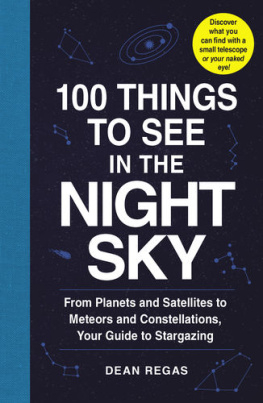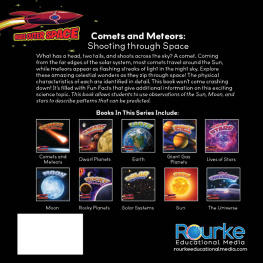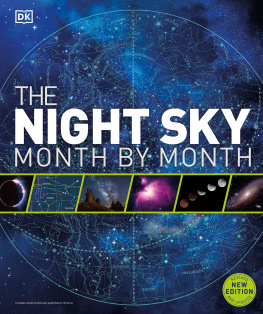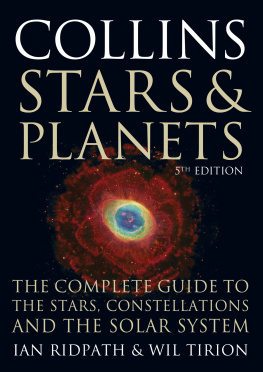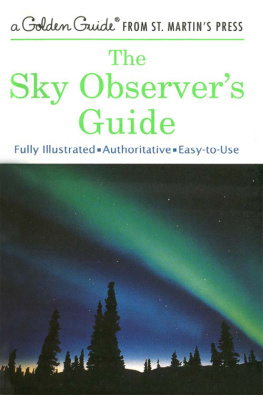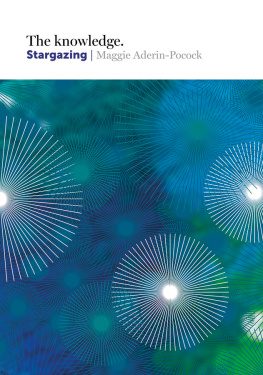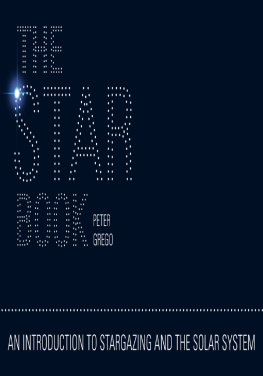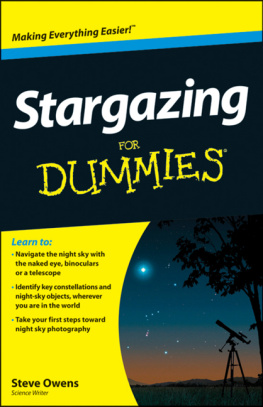Mike D. Reynolds - Binocular Stargazing
Here you can read online Mike D. Reynolds - Binocular Stargazing full text of the book (entire story) in english for free. Download pdf and epub, get meaning, cover and reviews about this ebook. year: 2005, publisher: Stackpole Books, genre: Home and family. Description of the work, (preface) as well as reviews are available. Best literature library LitArk.com created for fans of good reading and offers a wide selection of genres:
Romance novel
Science fiction
Adventure
Detective
Science
History
Home and family
Prose
Art
Politics
Computer
Non-fiction
Religion
Business
Children
Humor
Choose a favorite category and find really read worthwhile books. Enjoy immersion in the world of imagination, feel the emotions of the characters or learn something new for yourself, make an fascinating discovery.
- Book:Binocular Stargazing
- Author:
- Publisher:Stackpole Books
- Genre:
- Year:2005
- Rating:4 / 5
- Favourites:Add to favourites
- Your mark:
- 80
- 1
- 2
- 3
- 4
- 5
Binocular Stargazing: summary, description and annotation
We offer to read an annotation, description, summary or preface (depends on what the author of the book "Binocular Stargazing" wrote himself). If you haven't found the necessary information about the book — write in the comments, we will try to find it.
Binocular Stargazing — read online for free the complete book (whole text) full work
Below is the text of the book, divided by pages. System saving the place of the last page read, allows you to conveniently read the book "Binocular Stargazing" online for free, without having to search again every time where you left off. Put a bookmark, and you can go to the page where you finished reading at any time.
Font size:
Interval:
Bookmark:
Acknowledgments
Simply put, I love binocular astronomy. I have a number of telescopes (as my bride will correctly tell you, a few too many), yet I always carry a pair of binoculars with me regardless of my observing plans. But this was not always the case. Years ago, my then new wife, Debbie, and I would take our telescope out observing, and soon she began insisting on my bringing binoculars. I had a pair of old 7 35s I had been using since I was a kid, which are now more than forty years old. Shed use the 7 35s and Id use the telescope. It seemed as though I would go over and use the binoculars when she discovered some jewel in the sky more often than shed come over to the telescope.
The reason was simple: The low magnification, wide field of view, and ability to use both eyes allowed me to exploreto take inthe heavens on a different and, in some ways, more compelling level. Throughout my days as an educator and museum professional, people often asked me which telescope they should buy. My answer always surprised them.
So I guess this book has a long history, since I first lifted those inexpensive 7 35s skyward more than forty years ago. Binocular Stargazing is built on that history, as well as the assistance of a number of people. Peter Abrahams, fellow Antique Telescope Society member, has done a significant amount of historical binocular research that he was gracious in sharing with me. Dave Branchett, Phil Budine, and Gonzalo Vargas shared not only their binocular drawings, but also their enthusiasm, their drawing techniques, and some of their favorite objects. Likewise, one of my college students, Amber Hamilton, is a gifted artist and allowed me to use a couple of her sketches.
Even though they prepared what one would call technical sketches and diagrams, Ted Cox, David Frantz, and Rob Little contributed their incredible skills creating specific graphics for this book. Id ask, Can you illustrate this concept? and it would appearbetter than I had imagined! Wayne Green, one of my astro friends from junior high days, did an excellent job of illustrating binocular mounts with the help of a star trail, his wife, Christine, and a little computer assistance. Other photo contributions came from Dr. Wolfgang Wimmer of Carl Zeiss and Craig Weather-wax of Oceanside Photo and Telescope.
You will note my references to a couple of observing programs. My sincere thanks to Mike Benson, who chairs a number of the Astronomical Leagues Observing Clubs for his encouragement and support, as well as Elizabeth Waagen of the American Association of Variable Star Observers for graphics and program advice. I was also fortunate to have available the Washington Double Star Catalog, which is maintained at the United States Naval Observatory.
Some are talented with pen or pencil, others with photographic emulsion. The astronomical photos you see by Jerry Armstrong, Conrad Jung, Carter Roberts, and Vic Winter are simply some of the very best. I told someone that Vic simply drips with photographic talent, and I think you will agree.
I am also fortunate that I had a team of talented people who read the manuscript and provided solid input, on both the astronomy and the readability of the text. My most sincere thanks to Roger Curry, Dr. Rusty Harvin (another astro friend from elementary school days), Mike Ramirez, Mike Benson, and Pete Reynolds for their manuscript review and comments. My sister Susan LaForty worked hard trying to keep me grammatically correct. Any errors are my own and not due to anyone else.
David Levy is an amazing guy. I enjoy the opportunities to observe with David, who, like me, is enthusiastically rediscovering the sky with each look. I am humbled that he would write the Foreword for Binocular Stargazing.
Mark Allison and the entire Stackpole Books publishing team have again been a real pleasure to work with. They are supportive and committed to putting out a publication that readers will enjoy and find useful. I would especially like to thank Assistant Editor Chris Chappell, who has worked with me on this project.
Finally, most sincere thanks to my wife and best friend of more than thirty-two years. Debbie not only encourages my writing, but also is there to lift me up when I get bogged down. Plus, she still insists on taking those binoculars out when we go observing.
Keep looking up!
Mike D. Reynolds, Ph.D.
Jacksonville, Florida
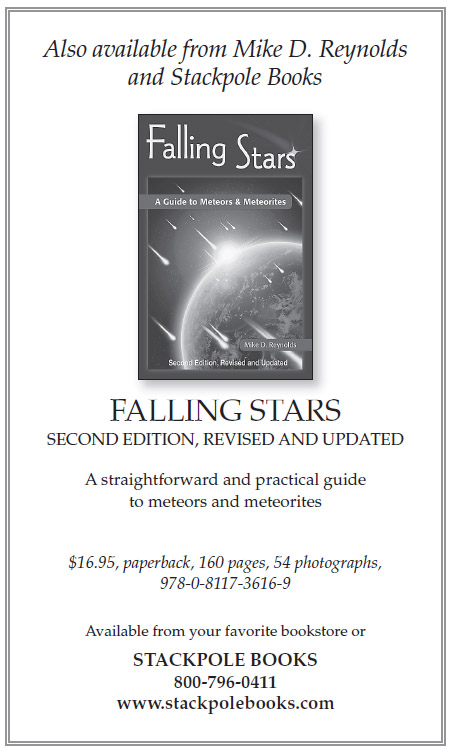
Appendix A
References
A number of excellent references as well as observing guides and materials are available, from the novice to advanced level. Some of these are out of print, so youll need to check with your local used bookstore or online for sources. A few classic books are included.
See appendix I for Planisphere sources as well as directions for use.
BINOCULARS AND EQUIPMENT
Hale, Alan R. How To Choose Binoculars. Redondo Beach, California: C & A Publishing, 1991.
Harrington, Philip. Star Ware. New York, New York: John Wiley & Sons, Inc., 2002.
Paul, Henry. Binoculars and All Purpose Telescopes. New York, New York: Amphoto, 1980.
Seyfried, J. W. Choosing, Using and Repairing Binoculars. Ann Arbor, Michigan: University Optics, Inc., 1995.
Watson, Fred. Binoculars, Opera Glasses and Field Glasses. Bucking-hamshire, Great Britain: Shire Publications Ltd, 1995.
OBSERVING BOOKS AND GUIDES
The American Association of Variable Star Observers (AAVSO). AAVSO Manual for Visual Observing of Variable Stars. Cambridge, Massachusetts: The American Association of Variable Star Observers, 2001.
Ancient City Astronomy Club. Observe The Herschel Objects. Washington, D. C.: The Astronomical League, 1980.
Bakich, Michael E. The Cambridge Encyclopedia of Amateur Astronomy. New York, New York: Cambridge University Press, 2003.
Beckman, K. C. Nova Hunters Handbook. Cambridge, Massachusetts: American Association of Variable Star Observers, 2000.
Bishop, Roy L., ed. Observers Handbook. Toronto, Ontario, Canada: Royal Astronomical Society of Canada. Published annually.
Burnam, Robert et al. Advanced Skywatching. New York, New York: Time-Life Books, 1997.
Burnham, Robert Jr. Burnhams Celestial Handbook. 3 vols. New York, New York: Dover Publications, 1978.
Chandler, David. Exploring the Night Sky with Binoculars. La Verne, California: David Chandler, 1994.
Cherrington, Ernest. Exploring the Moon Through Binoculars and Small Telescopes. New York, New York: Dover Publications, 1984.
Crossen, Craig and Gerald Rhemann. Sky Vistas: Astronomy for Binoculars and Richest-Field Telescopes. New York, New York: Springer Wien, 2004.
Crossen, Craig and Wil Tirion. Binocular Astronomy. Richmond, Virginia: Willmann-Bell, Inc., 1992.
Dickinson, Terence. The Backyard Astronomers Guide. Camden East, Ontario, Canada: Camden House, 1991.
_____. Nightwatch: An Equinox Guide. Camden East, Ontario, Canada: Camden House, 1983.
_____. Nightwatch: A Practical Guide to Viewing the Universe. Willowdale, Ontario, Canada: Firefly Books, 2001.
_____. Summer Stargazing. Camden East, Ontario, Canada: Camden House, 1996.
Discovery Channel. Night Sky. New York, New York: Discovery Books, 1999.
Evans, Robert O. AAVSO Supernova Search Manual. Cambridge, Massachusetts: American Association of Variable Star Observers, 1993.
Goldberg, Amelia. Universe Sampler: A Journey Through the Universe For the Beginner. Washington, D. C.: The Astronomical League, 1998.
Harrington, Philip. Touring the Universe through Binoculars. New York, New York: John Wiley & Sons, Inc., 1990.
Font size:
Interval:
Bookmark:
Similar books «Binocular Stargazing»
Look at similar books to Binocular Stargazing. We have selected literature similar in name and meaning in the hope of providing readers with more options to find new, interesting, not yet read works.
Discussion, reviews of the book Binocular Stargazing and just readers' own opinions. Leave your comments, write what you think about the work, its meaning or the main characters. Specify what exactly you liked and what you didn't like, and why you think so.


